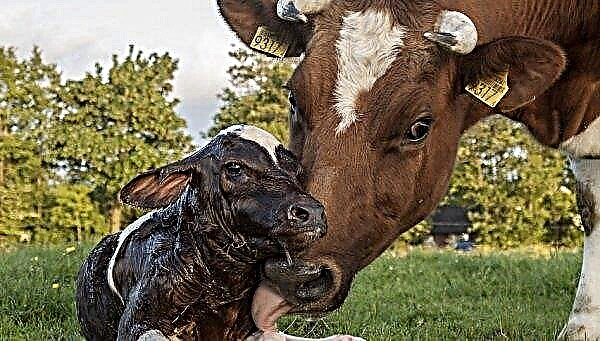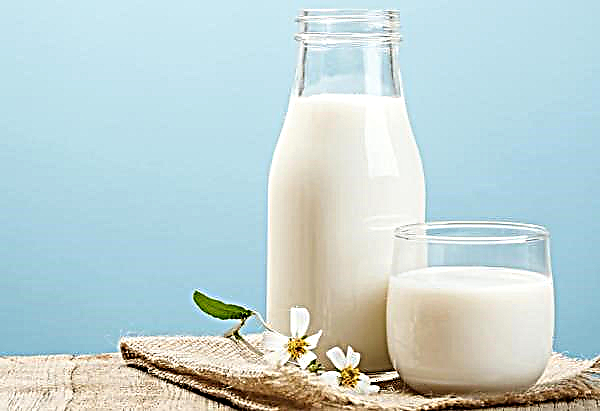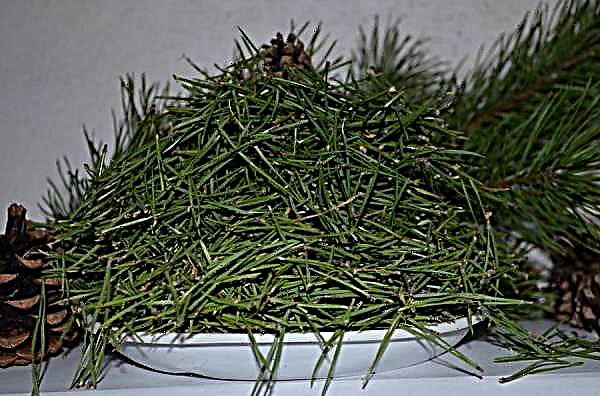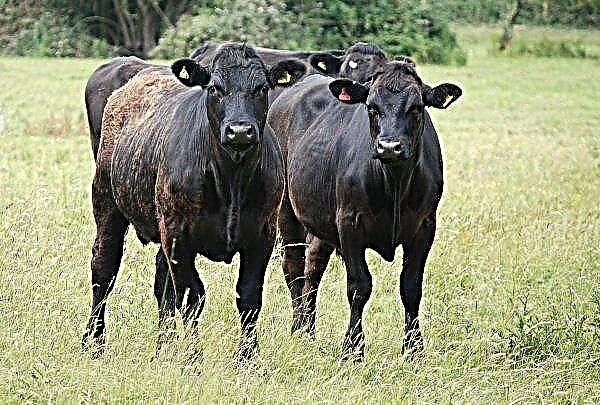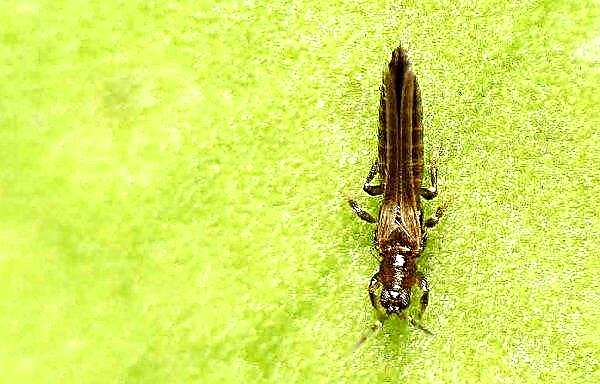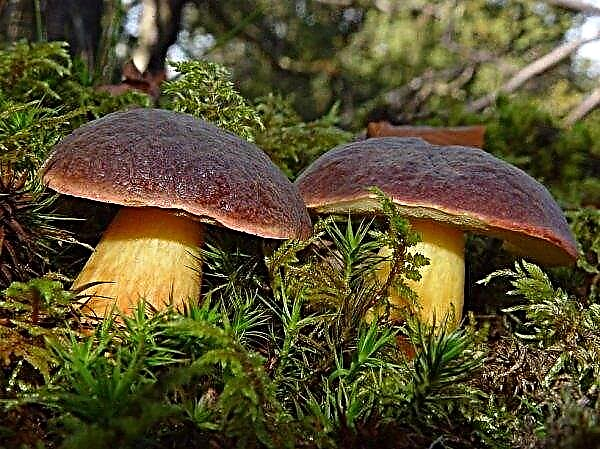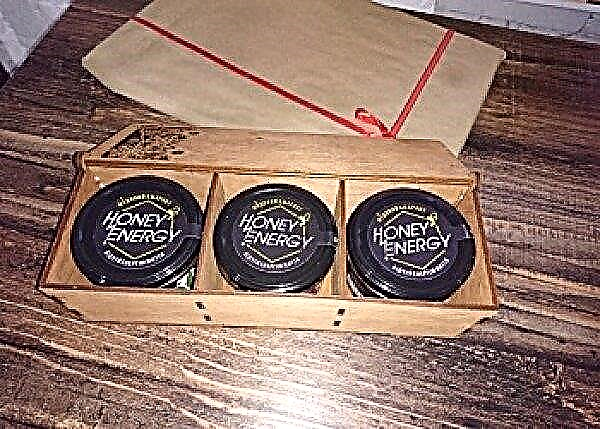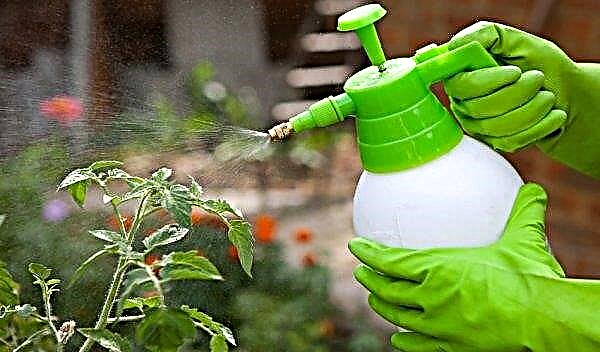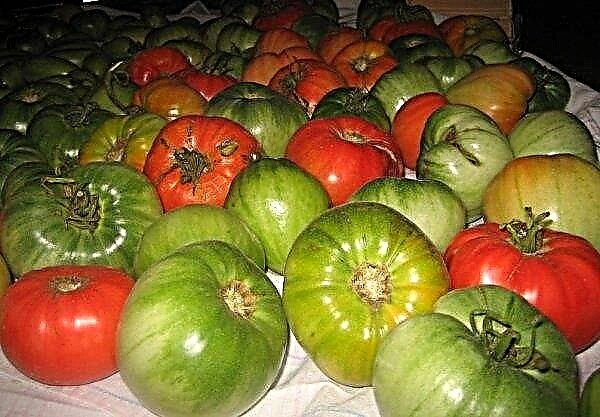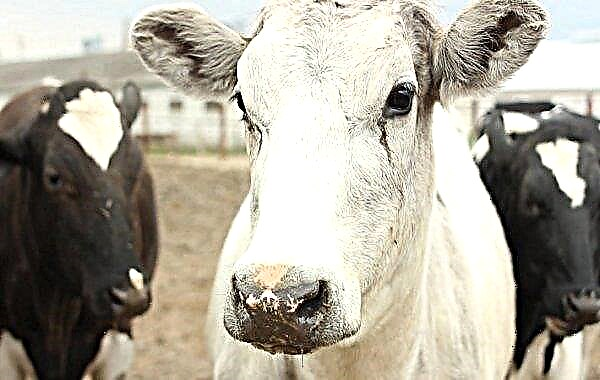Tomatoes Altai masterpiece were bred in 2007 for the conditions of Siberia, but many vegetable growers choose it for cultivation. In the article you will learn a description of this variety, as well as its pros and cons and how to grow a tomato Altai masterpiece with your own hands.
Grade description
The main characteristics of the Altai masterpiece variety:
- is a mid-season tomato. From the moment of the appearance of the first sprouts to harvesting, it takes from 110 to 120 days;
- suitable for greenhouse conditions and outdoor cultivation;
- resistant to adverse weather and frost;
- tall bushes - their height is about 2 meters;
- leaves are large, light green, thick brushes;
- on 1 m² of soil it is recommended to place 3-4 bushes;
- it is imperative to carry out the garter of the bushes to the support and do the stepsoning;
- the appearance of brushes occurs over every 10-11 sheet and is repeated every 3;
- the fruits are bright red, slightly flattened and ribbed on the sides;
- the weight of each tomato is 300-500 grams;
- the pulp is juicy and sweet;
- during ripening, cracking of the fruit does not occur;
- subject to growing recommendations from 1 m², you can collect up to 10 kilograms of fruit;
- It is resistant to many diseases, including late blight and root rot;
- tolerates transportation well.

Advantages and disadvantages
- Consider the main advantages and disadvantages of this variety of tomatoes. The pluses include the following:
- unpretentiousness in leaving and resistance to adverse conditions;
- pleasant sweet taste;
- prolonged fruiting;
- lack of cracking of fruits during ripening;
- resistance to many diseases;
- high productivity;
- good transportability.
- With all the positive qualities of the Altai masterpiece, he still has some disadvantages, including:
- it is necessary to carry out stepsoning;
- due to the large size of the fruit is not suitable for conservation;
- large tomatoes can break off brushes, so they need to be tied.
How to grow tomato seedlings yourself
To grow the Altai masterpiece yourself, you must first deal with seedlings: consider the stages of its cultivation in more detail.
Optimum timing for sowing
Sowing seeds for seedlings must be carried out 60-65 days before when it will be necessary to plant them in the ground. Usually the seeds of the Altai masterpiece are sown in March, in order to plant bushes in a permanent place in late spring - early summer.
Did you know? More than 60 million tons of tomatoes are produced annually in the world.
Soil and container for growing
It is necessary to prepare in advance a container for growing (boxes, pots, peat tablets, glasses) and nutritious soil for tomatoes.
It is best to use ready-made substrates for seedlings, which must contain:
- humus;
- peat;
- decayed leaves;
- mineral supplements.
This method is as follows:
- In winter, the soil should be taken out in the cold and kept there for a week.
- Put the mixture in a warm room for a week.
- Repeat the procedure twice more.
- Pour the soil with potassium permanganate in the ratio of 3 g of potassium permanganate per 10 liters of water.
- Leave for two weeks.
After that, the soil will be ready for planting seeds.
Seed preparation
Before planting, seeds need to be processed. First of all, it is necessary to select the most viable specimens: for this they need to be placed in a container with water. Floated seeds are inferior, they do not need to be planted.
The seeds that remain at the bottom are suitable material for sowing, but before sowing them, it is necessary to carry out:
- disinfection. To do this, place them in a warm solution of potassium permanganate (the powder is taken at the tip of the knife so that the water is slightly tinted);
- soaking in growth stimulants. Usually, aloe juice, ash infusion or Zircon, Epin preparations are used for this.
Sowing seeds
Prepared seeds must be planted in boxes to a depth of 3 cm at a distance of 1-2 cm from each other.
Important! To accelerate the growth of tomatoes, boxes with seedlings should be placed in a warm place with a temperature of +24 ... + 26 ° C and covered with plastic wrap, which should be removed after the first sprouts appear.
Seedling Care
After the shoots appear, the containers with seedlings must be put on the windowsill on the south side of the house and pour them with warm water. The temperature in this room should be at least +15 ... + 16°C, and at night - at least +8°C. The daylight hours for these tomatoes should be at least 14 hours.
Sprouts do not need to be filled with water - it is enough to water once every 5–7 days and to fertilize Kemira or Agricola 2-3 times. When 2-3 leaves appear, the bushes must be dived in separate pots. It is best to take containers with a volume of at least 1 liter.
2 weeks before the alleged planting in the soil, the seedlings need to be hardened. To do this, it is necessary to temporarily take it to fresh air, gradually increasing the length of stay there.

Planting seedlings in a permanent place
2 months after planting seeds, you can plant bushes in the ground. For the Altai masterpiece, it is necessary to choose a well-lit place, protected from drafts. The soil should have a light structure and be saturated with nutrients.
A transplant is done after the air temperature is less than + 15 ° C, and the soil is well warmed up. Planting scheme - 50 × 40 centimeters, on 1 m² there should be no more than 4 plants. The plant is buried in the ground 1/3 of the stem. The formation of a bush is best done in 2 stems.
How to care in the open ground
After transplanting into open ground, tomatoes will need some care: consider the main points.
Watering
Watering must be carried out after 3-4 days, the regularity depends on the weather. Water should be applied directly under the bush, without touching the stem and leaves, as this can lead to burns in the plant.
Watering should be moderate, because in case of overflow, the roots will rot, causing the death of the plant. Insufficient watering is fraught with the formation of weak bushes and immature fruits.Important! The procedure should be carried out with warm, standing water, since cold liquid can lead to poor development of the root system of the tomato.
Top dressing
With an insufficient amount of nutrients, plants can develop poorly, so it is necessary to carry out their periodic feeding with both organic and mineral fertilizers.
The first top dressing is carried out before the formation of the ovary on the bushes. After fertilizing should be repeated after one and a half weeks.
Stepson
The pinching procedure is necessary for the Altai masterpiece, as this will help redirect beneficial elements to the fruits, which will positively affect the ripening time.
The first stepsons appear during the development of the first flower brush. The first stepson, growing under the brush, is usually the strongest - it is left. The remaining stepsons below the first one must be removed from the bush.
Stepsons are removed in two ways:
- tear off hands. To do this, break them off to the side;
- cut with garden shears, which are recommended to be disinfected in potassium permanganate after each procedure to avoid the appearance and spread of infections.
Soil care
In the near-sector sector, the soil needs periodic loosening. This procedure helps to increase the flow of air and moisture to the roots, and also prevents the formation of a dense crust on the soil surface. Simultaneously with loosening, weeding should be done from weeds.
To better preserve moisture and heat, the soil near the bushes of tomatoes should be covered with a layer of mulch - this will help reduce the number of weeds on the site.
Tying bushes
Tomatoes Altai masterpiece need to be tied. This procedure is necessary to prevent damage to the plants under the pressure of the fruits. Also, tying is necessary so that the fruits, dropping to the ground, do not get tomato rot.
When tying tomatoes, such means are used:
- Stakes. Their height should be from 2 to 2.5 meters. A peg is driven in near each bush and a garter is made near the crown of the stem using ribbons, stockings, and strips of fabric.
- Caps. The cap is created from 4 rods and used for 4 bushes. It must be dug up to 25 centimeters, the top of the rods is connected using a wire.
- Trellis. Between the rods, which are located at a distance from each other, pull the wire. The distance between the rows of wire should be about 45 centimeters. Bushes are attached to this wire.
- Cells. For each bush you need to make a separate cage from wire or metal. They dig it into the ground for 15 centimeters and tie a plant to it.
Preventative treatment
Tomatoes Altai masterpiece is very resistant to diseases, but they can be affected by such diseases:
- late blight - able to quickly destroy both the plant itself and its fruits;
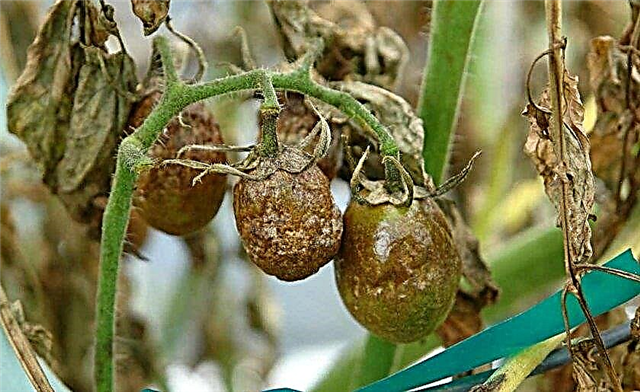
- tomato rot - appears when waterlogged land. In a tomato, the root neck begins to rot, which leads to the death of the entire plant.
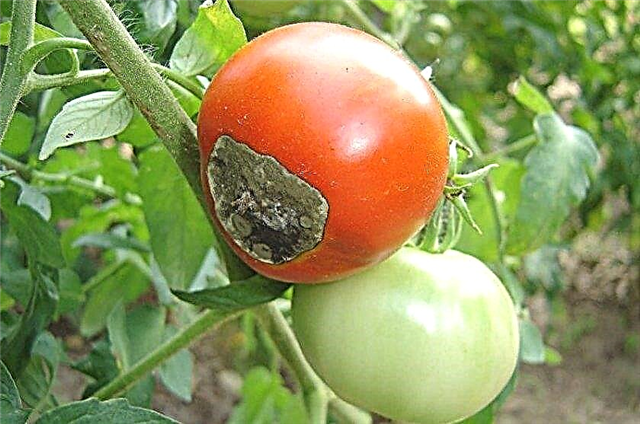
Prevention of these diseases is the observance of agricultural techniques for growing tomatoes Altai masterpiece. It is necessary to properly water the plants, do timely dressing and remove diseased bushes from the beds.
Insecticides are commonly used against pests. Mechanical collection of insects is also possible.
Harvesting
Harvesting is necessary after 110-120 days from the appearance of the first tomato sprouts, therefore, the ripening period of the fruits directly depends on the timing of planting. Typically, fruit ripening occurs in the first decade of August and lasts until the end of September.
Did you know? The largest tomato was grown in the United States: its weight was 2.9 kilograms.
Tomatoes of this variety ripen directly on the bushes, they do not need ripening. The Altai masterpiece is recognized as a salad variety, although it can be used to make juice, sauces, seasonings and mashed potatoes.
Video: Tomato variety Altai masterpiece
You can store ripe fruits in the refrigerator for 10-12 days. Being careful when picking tomato fruits and subject to tight packing in boxes, this variety is well transported even over a long distance.
Despite the fact that the Altai masterpiece tomato was bred relatively recently, it has already managed to gain popularity due to its unpretentiousness and excellent taste. Knowing all the intricacies of caring for this variety, you can grow it in your garden and eat it.
I wanted to praise the Altai masterpiece tomato variety! This is a variety that yields very tasty and beautiful fruits. In addition, a fairly productive variety - up to ten kilograms of tomatoes, and even more in a greenhouse, can be obtained from one meter square on a garden bed. Each fruit reaches four hundred grams, and it can be even larger. I can attribute special good qualities to fairly good resistance to diseases, and they also tolerate a drop in air temperature quite well (but not freezing, of course); It is very important for vegetable growers. In addition, the first crop can be harvested after 110 days from the time of germination. They cultivate the Altai masterpiece variety both in greenhouses and in open ground. Tomatoes are used with pleasure fresh, and you can also cook anything you like - juice, tomato paste, canned with other vegetables (for example, make dough or beetroot caviar). It is very good that this variety is not a hybrid, and everyone who grows them can collect their own seeds. A drawback is probably a rather high growth of bushes, they reach one and a half meters. And, it is clear that they require mandatory garter. Some growers do not like to mess with trellis or stakes.
http://www.bolshoyvopros.ru/questions/1935171-sort-pomidorov-altajskij-shedevr-kakie-otzyvy-kak-vyraschivat.html#answer5764939




